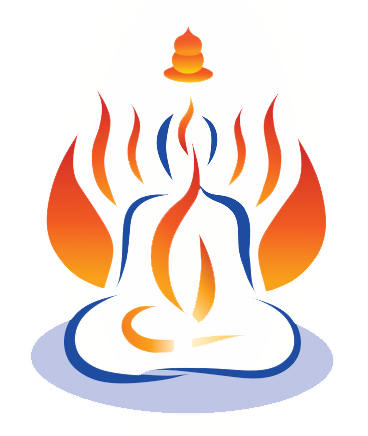Mahashivaratri is part of the Hindu tradition—the Siddha Lineage Masters of the Hard Light Center of Awakening hail from India and the Hindu culture. Mark Griffin first met his Guru, Swami Muktananda, at the Oakland Ashram on February 28, 1976, at the closing of a Mahashivaratri celebration. Those of us who spent time with Baba in America and India adopted many traditions that Baba celebrated. Mark was a great lover of Mahashivaratri and always did an all-night vigil.
All Indian spiritual holidays are based on the Vedic soli-lunar calendar. Unlike the western Gregorian calendar, a lunisolar calendar uses the 29.53-day cycle of the Moon’s phases to define the months of the year – usually starting each month when the new Moon phase occurs or on the day when the young crescent Moon is first glimpsed after sunset. Every month of the lunisolar Hindu calendar, there is a Shivaratri – “night of Shiva” – on the day before the new moon. But once a year, in late winter, this night is called “Maha Shivaratri” – “the Great Night
of Shiva”.
Out of the mind of God, the moon was born. The moon represents a person’s mind and emotions, so it has a very personal significance to each individual, whereas the sun represents the soul. The sun is vital to us, too, as it is our primary source of light, but its light is reflected on the moon (as the moon has no light source of its own), so the moon is the bearer of the soul’s energy. Therefore the Moon indicates our emotional and psychological patterns and tendencies. Just like the moon, the mind also goes through waxing and waning. Therefore, all spiritual effort is towards conquering one’s mind by reaching the stage of no mind so that the Maya or illusion surrounding us is dispelled and reality is revealed to us.
One-half of the lunar cycle is about the moon that is continuously waning. It represents a transition from a mind fully immersed in maya or worldly illusion to a no-mind state which means coming face-to-face with the ultimate truth. The 14th day of the lunar cycle is referred to as Chaturdashi. One more day, and we reach Amavasya, the day of total darkness, the new moon. So, there is a little bit of moon left on Chaturdashi. That’s why the moon that is only a sliver in the night sky is referred to as a “Shiva moon.” So, the Chaturdashi of the dark half of the lunar cycle is called Shivaratri.
But what makes the Shivaratri in the February-March time frame a Mahashivaratri? At the time of Mahashivaratri, according to the Vedic calendar, Sun, the planet representing our soul and consciousness, will be transiting in Aquarius. From that position it aspects the Leo sign, its sign, and the sign owned by the sun itself. And within it, it aspects the Uttara Phalguni nakshatra (or lunar mansion), the nakshatra that belongs to the sun itself. This aspect happens only once a year – the sun aspecting its sign in its own nakshatra. That’s why the February/March month of Phalgun and the Mahashivaratri in it is considered the night where our consciousness reaches its peak. The strength of the moon astrologically along the planetary influences is the least on Mahashivaratri. A little effort made spiritually can help us achieve mastery over the mind.
Our focus and energies naturally are oriented to the upper chakras of our body. Therefore, it is beneficial, wherever possible, to stay upright during the night and use this energy to meditate and raise our consciousness. Stay in a straight sitting position as much as possible, and continue to chant any Shiva mantra you know. It can be Om Namah Shivaya or Maha Mrityunjaya mantra. I have always been amazed by the power of the Om Namah Shivaya mantra. It was the first mantra I received from Swami Muktananda, and it was immediately apparent that it was a Chaitanya mantra — meaning that it is conscious. It carries the consciousness of Shiva.

